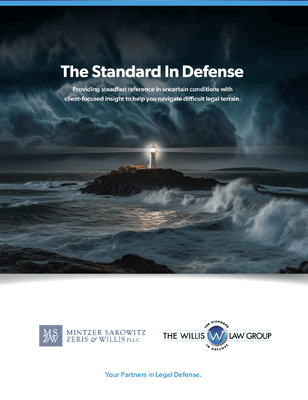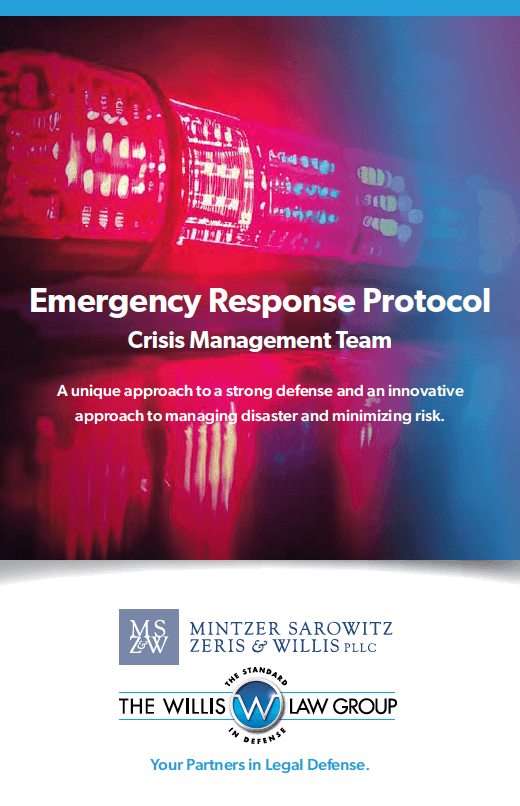Delaware Legislature Enacts Law Requiring Disclosure of Bodily Injury Limits
Jan 18, 2019 - News by Defense Counsel
Prior to September 4, 2018 and the enactment by the Delaware Legislature of a law requiring insurance companies to disclose bodily injury limits in auto policies, insurance companies were not required in Delaware to disclose coverage limits prior to litigation, to third-parties, claimants, or their attorneys. The practice of nondisclosure predates the 1930s, and is a remnant from a time when insurance contracts and their terms were not only exclusively private matters between insurers and insureds, but also matters largely undiscoverable.[1] This was so because discovery requests could only seek information relevant to the proof of a fact of consequence, or at least appear reasonably calculated to lead to the discovery of relevant evidence, of which the terms of an insurance policy were neither.[2] Hence, discovery propounded to obtain insurance information was considered immaterial to the issue, irrelevant, and having nothing to do with the plaintiff’s case or burden of proof.[3] Furthermore, whatever advantages the plaintiff might have gained from the discovery of the terms of an insurance policy were not advantages relevant to the case at hand.[4]
Knowledge of a tortfeasor’s policy limits pre-litigation was and still is an advantage of substantial value, and typically sought for the sole purpose of evaluating whether or not it is wise to settle a case or proceed to litigation. Therefore, insurance information sought solely for that purpose was considered “not discoverable” as it was evidence of nothing and had no bearing on the case.[5] There were of course exceptions and times where such information was discoverable, provided the terms of the policy touched upon a matter at issue. For instance, where the ownership of an automobile was at issue, an insurance policy showing ownership would not only be discoverable, but admissible to prove same.[6]
In 1951, the California Supreme Court decision in Superior Insurance Company v. The Superior Court in and for Los Angeles County exercised a novel approach favoring production of insurance information for reasons not previously considered, and where the petitioners urged
…that the sanctity of a private contract should not be subjected at this time … to inspection and review, merely because someone alleges that someday, he expects to sue another to enforce payment of a judgment expected to someday be obtained. A sufficient answer to such a contention is found in the fact that an automobile liability policy evidences a contractual relation created by statute which inures to the benefit of any and every person who might be negligently injured by the assured, as completely as if such injured person has been specifically named in the policy, i.e., a contractual relation is created between the insurer and the third parties. The provisions of such a policy are not, therefore, a matter of sole knowledge of the named assured and the insurance carrier to the exclusion of the injured person; the very pendency of an action by the injured person brought in good faith against the named insured person gives the former a discoverable interest in the policy….(emphasis not in original).
Notwithstanding, and for the next twenty years, both the courts and commentators were sharply in conflict over the question of whether a defendant’s liability insurance coverage was subject to discovery in the usual situation, when the insurance coverage was not itself admissible nor had any bearing on any other issue in the case. The controversy ended in the federal courts however, at least as a matter of law, with the amendment and enactment of FRCP 26(b)(2), which became effective on July 1st 1970. The rule made it possible for the first time for parties to obtain all information regarding applicable insurance policies by serving interrogatories, requests for production, and by taking oral depositions. The rule was again amended in 1993 eliminating the need to serve discovery to obtain such information, and now requires the information be produced automatically at the beginning of every case filed in Federal Court. The states have adopted similar rules, though the timing and method of disclosure can vary significantly.
In no case however was an insurance company required to disclose the existence, applicability, or amount of insurance available, to third parties prior to filing suit. However, this is changing. Within the last few years, a limited number of states began amending their insurance laws such that unrepresented and represented claimants can now obtain information regarding a tortfeasor’s bodily injury limits in their automobile policies, provided certain conditions are met.
On September 4, 2018, the Delaware Legislature enacted House Bill 413 along with Amendment No. 1, requiring insurance companies to disclose liability limits to claimants and their attorneys provided the claimant suffered injuries in an accident involving a motor vehicle. To obtain the coverage limits, the claimant must send a written request to the tortfeasor’s insurance company stating the date of the accident. If the claimant is able to provide the name and address of the tortfeasor, Police Report and/or claim number, the rule requires that information be included with the written request.
It is also necessary for the claimant provide copies of all related medical records, bills, and documentation of wage-loss, if any. If the bills and wage-loss is equal to or greater than $12,500, the insurer must respond in writing within thirty days of receipt of the request. The response must disclose the tortfeasor’s bodily injury liability limits in effect on the date of loss for all motor vehicle policies insuring the tortfeasor, whether or not the applicability of the policy is contested by the insurance company.
The disclosure of the tortfeasor’s limits is not an admission that any policy applies to the claimed loss, and any information disclosed through an attempt to comply with the statute is inadmissible at trial. Lastly, the disclosure is confidential and applies to both the claimant and their attorney.
Insurance professionals are encouraged to forward this information to their claims counsel for consideration and implementation of procedures necessary to assure compliance.
[1] Goheen v. Goheen 96 N.J. Misc. 507, 154 Atl. 393 (1931); Joseph T. LaVorci, Disclosure of Insurance Policy Limits, 6 DePaul L. Rev. 225 (1957).
[2] Fed. Rule of Civ. P. 26(b)(1); McNelley v. Perry, 18 F.R.D. 360, 361 (1955).
[3] Goheen, at 393; McClure v. Boeger, 105 F. Supp 612, 613 (1952).
[4] Id.
[5] Jeppsen v. Swanson, 68 N.W. 2d 649, 658 (1955).
[6] Layton v. Cregan and Mallory Company, Inc., 248 N.W. 539 (1933).



